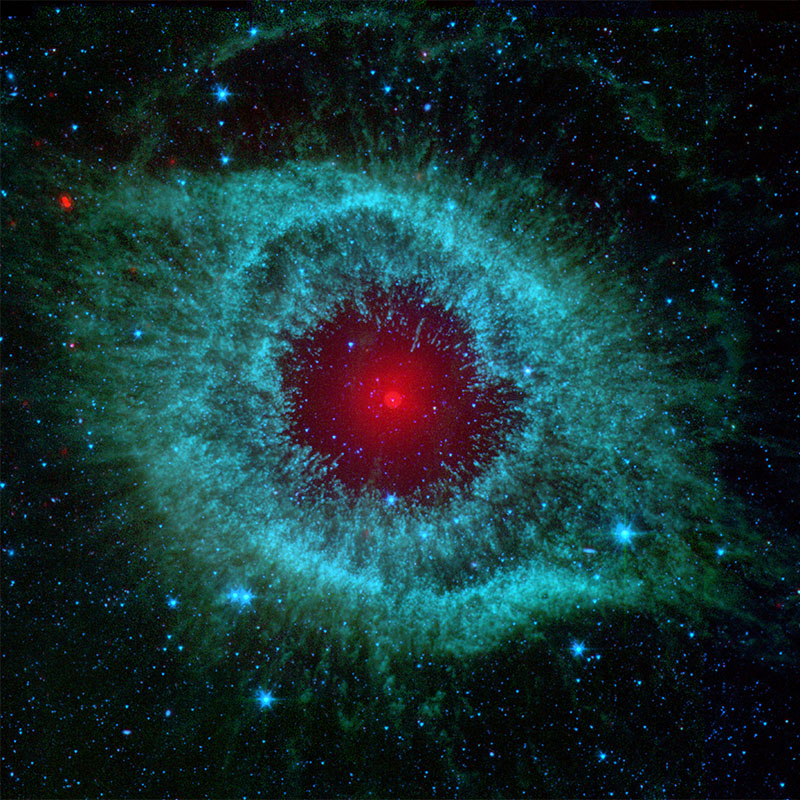NGC7293 - The Helix Nebula

Credits: NASA / JPL - Caltech / Univ of Arizona
The Helix Nebula is an example of a planetary nebula, formed by an intermediate to low-mass star, which sheds its outer layers near the end of its evolution. Gases from the star in the surrounding space appear, from our vantage point, as if we are looking down a Helix structure. The remnant central stellar core, known as the central star of the planetary nebula, is destined to become a white dwarf star. The observed glow of the central star is so energetic that it causes the previously expelled gases to brightly fluoresce.
Facts about NGC7293 by Keith Turnecliff
Planetary nebulae are actually the remains of stars that once looked a lot like our sun. These stars spend most of their lives turning hydrogen into helium in massive runaway nuclear fusion reactions in their cores. In fact, this process of fusion provides all the light and heat that we get from our sun. Our sun will blossom into a planetary nebula when it dies in about five billion years.

This star chart represents a view from Long Itchington for early November at 10pm.
Credits: Image courtesy of Starry Night Pro Plus 8, researched and implemented by Keith Turnecliff.